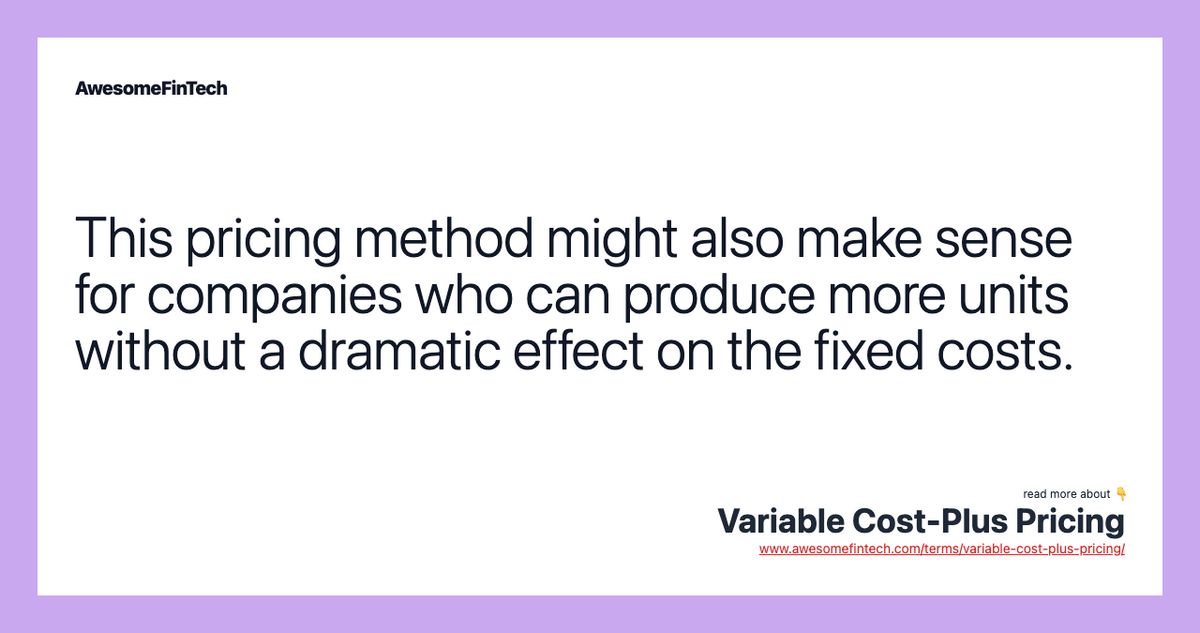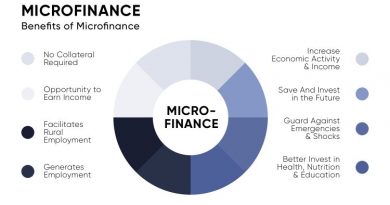Variable Cost-Plus Pricing Overview Pros and Cons

Variable cost-plus pricing is a pricing method that sets the selling price by adding a markup to total variable costs. The goal is to cover fixed costs and generate a profit. This strategy is beneficial in competitive scenarios like contract bidding but not suitable when fixed costs are a significant part of the total costs.
Here are the key takeaways:
– Variable cost-plus pricing adds a markup to include a profit margin for both fixed and variable costs.
– It is useful for contract bidding when fixed costs are stable.
– This method works for companies that can increase production without affecting fixed costs significantly.
– However, it does not consider market factors or customer perceptions of value, and it can lead to pricing inefficiencies if variable costs are low.
How Variable Cost-Plus Pricing Works:
Variable costs are expenses that change with production output, such as labor and materials. Under variable cost-plus pricing, a company calculates the variable costs per unit and adds a markup to cover fixed costs and generate the desired profit margin.
For example, if the total variable costs for manufacturing one unit of a product are $10, and the fixed costs per unit are estimated at $4, the unit price would be set at $15 to cover fixed costs and leave a profit.
However, this pricing method is solely inward-looking and does not consider competitors’ prices or market perceptions of the product’s value.
When to Use Variable Cost-Plus Pricing:
Variable cost-plus pricing is suitable when variable costs represent a large proportion of total costs and can cover the fixed costs per unit. If the ratio of variable costs to fixed costs is low and fixed costs increase as production escalates, using this pricing method could result in inaccurate and unsustainable prices.
This method may also be appropriate for companies with excess capacity that do not incur additional fixed costs per unit when increasing production. By adding a markup to variable costs, these companies can achieve a profit margin.
However, the major shortcoming of variable cost-plus pricing is its failure to consider market perception and value or the prices of similar competitor products.
Advantages and Disadvantages of Variable Cost-Plus Pricing:
The main advantage of variable cost-plus pricing is its simplicity. It allows sellers to set prices that cover costs and provide a reasonable profit margin. It also facilitates contract negotiation with suppliers and justifies price increases due to rising production costs.
However, it is not suitable for companies with significant fixed costs or fixed costs that increase with production. Also, it does not consider market demand or competitor products, which can affect sales. Additionally, if a company’s variable costs are low, this pricing model can result in inefficient pricing.
Variable Cost-Plus Pricing vs. Cost-Plus Pricing:
Variable cost-plus pricing differs from cost-plus pricing. Cost-plus pricing calculates prices based on the total cost of producing goods, adding a markup to cover costs. In contrast, variable cost-plus pricing adds a markup only to variable costs, assuming it will cover fixed costs.
Cost-plus pricing has been criticized for not incentivizing cost containment and efficiency improvements. Companies that base prices on total costs may benefit more from inflating fixed costs than from reducing inefficiencies.
What Is Rigid Cost-Plus Pricing?
Rigid cost-plus pricing, also known as cost-plus pricing, is a simple pricing model based solely on the total cost of producing and selling a product. It calculates per-unit costs, including production, transportation, sales, and other services. A fixed markup is added to set the final price.
How to Calculate Variable Cost-Plus Pricing:
To calculate variable cost-plus pricing, add a markup to the per-unit costs of producing each additional unit. For example, if the materials, labor, and transportation costs amount to $1 per bottle, the total price might be marked as $1.20. Although this model excludes fixed costs, the markup is assumed to sufficiently cover them.
Examples of Variable Costs:
Variable costs increase as more units of a product are produced. Raw materials and labor are examples of variable costs since producing more units requires more of these resources. Fixed costs, on the other hand, do not change significantly with production, such as facility and machinery costs.
What Is Variable Cost Transfer Pricing?
Variable cost transfer pricing refers to the price at which entities related to one another (e.g., different departments or a parent company and its subsidiary) transact. This price is typically determined through cost-based or profit-seeking pricing models. In the case of variable cost transfer pricing, the purchaser pays only the variable costs of production without any markup.



